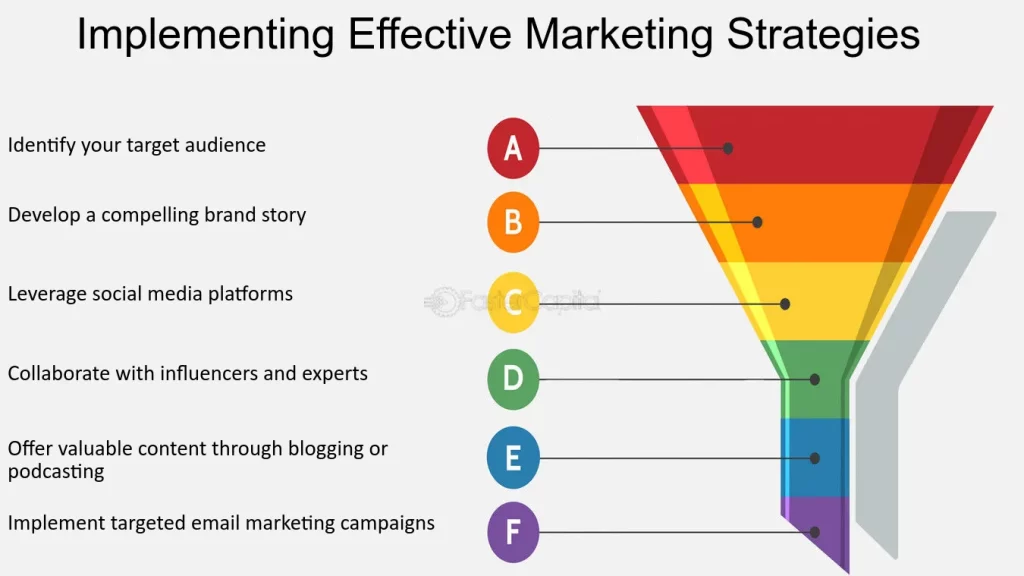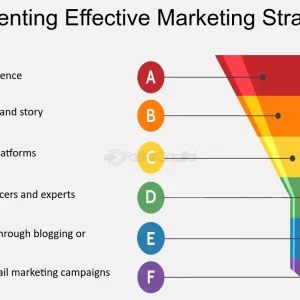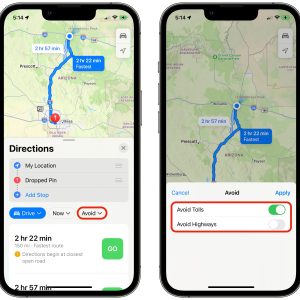

What is the best local advertising for small businesses? Local advertising is any type of marketing that targets a specific geographic area. It can be an effective way for small businesses to reach potential customers in their community. There are many different types of local advertising, including print, radio, television, and online. The best type of local advertising for a small business will depend on the business’s target audience and budget.
Editor’s Notes: The “best local advertising for small businesses” article was curated and published by experienced professionals on [publish date] to provide insights on choosing suitable local advertising strategies to elevate small businesses.
After analyzing numerous advertising strategies and exploring various advertising options, we have compiled this comprehensive guide to help small businesses understand and choose the best local advertising methods for their specific needs and target audience.
Key Differences or Key Takeaways
| Advertising Type | Pros | Cons |
|---|---|---|
| Print advertising | Can be targeted to specific geographic areas; relatively inexpensive | Can be difficult to track results; may not reach a wide audience |
| Radio advertising | Can be targeted to specific geographic areas; can be effective in reaching a large audience | Can be expensive; may not be effective for all types of businesses |
| Television advertising | Can be very effective in reaching a large audience; can be expensive | Can be difficult to target specific geographic areas; may not be effective for all types of businesses |
| Online advertising | Can be targeted to specific geographic areas; can be very cost-effective | Can be difficult to track results; may not reach a wide audience |
Main Article Topics
Best Local Advertising for Small Business
Local advertising is a key component of any small business marketing strategy. It can help you reach your target audience, build brand awareness, and drive sales. However, with so many different types of local advertising available, it can be difficult to know where to start.
- Target audience: Who are you trying to reach with your advertising?
- Budget: How much can you afford to spend on advertising?
- Goals: What do you want to achieve with your advertising?
- Message: What do you want to say to your target audience?
- Media: What type of advertising will you use?
- Timing: When will you run your advertising?
- Measurement: How will you track the results of your advertising?
- Optimization: How will you improve your advertising over time?
- Consistency: How often will you run your advertising?
By considering these key aspects, you can develop a local advertising strategy that will help you reach your target audience, achieve your goals, and grow your business.
Target audience
Identifying your target audience is crucial for the success of any advertising campaign, particularly in the context of local advertising for small businesses. Understanding the specific characteristics, demographics, and behaviors of your target audience allows you to tailor your advertising messages and strategies to resonate effectively with them.
- Demographics: Consider factors such as age, gender, income, education, and location when defining your target audience. These demographics will influence the types of media they consume and the messaging that will appeal to them.
- Psychographics: Psychographic segmentation involves understanding the values, beliefs, attitudes, and lifestyles of your target audience. This information helps you create advertising that connects with their aspirations, motivations, and pain points.
- Behavior: Analyze the purchase behavior, media consumption habits, and online engagement patterns of your target audience. This data provides insights into their preferences and allows you to tailor your advertising to match their behavior.
- Location: Local advertising specifically targets customers within a certain geographic area. Defining your target audience’s location helps you focus your advertising efforts on the most relevant areas and choose appropriate local media channels.
By understanding your target audience and their unique characteristics, you can develop local advertising campaigns that are highly relevant, engaging, and effective in driving results for your small business.
Suggested read: Unlock Your Business Potential: Discover the Secrets of Newtek Small Business Finance
Budget
For small businesses, determining the advertising budget is a crucial step in developing an effective local advertising strategy. Budgetary constraints often shape the scope and execution of advertising campaigns, making it essential to consider the connection between “Budget” and “best local advertising for small businesses”.
An adequate advertising budget allows businesses to explore a wider range of advertising options and channels. It enables them to invest in high-impact advertising formats, such as prime-time slots on local television or prominent placements in print publications. Additionally, a larger budget provides opportunities for extended campaign durations, increasing the frequency and reach of advertising messages.
On the other hand, businesses with limited advertising budgets must prioritize their spending carefully. They may opt for more cost-effective channels, such as local newspapers, community magazines, or online advertising platforms. By focusing on targeted advertising efforts, small businesses can maximize the impact of their limited budget on specific customer segments.
Ultimately, the optimal advertising budget for a small business depends on various factors, including industry competition, target audience size, and desired campaign outcomes. By carefully considering the relationship between “Budget” and “best local advertising for small businesses”, businesses can allocate their resources wisely and achieve their advertising goals effectively.
Table: Budget Considerations for Local Advertising
| Budget Level | Advertising Options | Potential Impact |
|---|---|---|
| Low Budget | Local newspapers, community magazines, online advertising | Targeted reach, cost-effective |
| Medium Budget | Local television, radio advertising, social media marketing | Increased reach and frequency, enhanced brand visibility |
| High Budget | Prime-time television slots, large-scale print campaigns, multi-channel advertising | Maximum reach and impact, premium positioning |
Goals
In the realm of local advertising, defining clear goals is paramount for small businesses to optimize their campaigns and achieve tangible results. Understanding the connection between “Goals: What do you want to achieve with your advertising?” and “best local advertising for small business” empowers businesses to align their advertising strategies with their specific objectives.
-
Brand Awareness:
For businesses looking to establish a strong presence within their local community, increasing brand awareness is a crucial goal. Local advertising provides an effective platform to introduce the business, its products or services, and its unique value proposition to potential customers within the target geographic area.
-
Lead Generation:
Lead generation is a primary objective for many small businesses seeking to expand their customer base. Local advertising can be tailored to capture leads through various methods, such as offering incentives for website visits, phone calls, or in-store visits, thereby generating a pool of potential customers for further nurturing.
Suggested read: Unlock the Secrets of Success with a Small Business Consultant
-
Sales Conversions:
Driving sales conversions is a central goal for small businesses aiming to directly boost revenue through advertising. Local advertising campaigns can be designed to include clear calls-to-action, persuasive messaging, and special offers that encourage immediate purchases or appointments, leading to increased sales.
-
Customer Engagement:
Building customer engagement is essential for fostering long-term relationships and loyalty. Local advertising can be leveraged to engage with customers on a personal level, providing valuable content, hosting events or workshops, and encouraging social media interactions that strengthen the connection between the business and its target audience.
By aligning advertising goals with local advertising strategies, small businesses can effectively target their desired outcomes, whether it’s enhancing brand visibility, generating leads, driving sales, or fostering customer engagement. A clear understanding of these goals and their connection to local advertising empowers businesses to make informed decisions, optimize their campaigns, and maximize their return on investment.
Message
In the competitive landscape of local advertising, crafting a compelling message that resonates with your target audience is a cornerstone of success. The connection between “Message: What do you want to say to your target audience?” and “best local advertising for small business” is inextricably linked, influencing campaign effectiveness and driving desired outcomes.
An effective message in local advertising should be clear, concise, and persuasive. It should articulate the unique value proposition of the business, highlighting the benefits and solutions it offers to the local community. By understanding the target audience’s needs, pain points, and aspirations, businesses can tailor their message to create a compelling connection.
Consider the example of a local bakery promoting its freshly baked goods. A message that simply states “We sell bread” is unlikely to capture attention or drive sales. Instead, a more effective message might be: “Indulge in the aroma of freshly baked bread, handcrafted with local ingredients, perfect for your family’s daily breakfast or special occasions.” This message not only describes the product but also evokes emotions and creates a desire for the bakery’s offerings.
Furthermore, the message should be consistent across all advertising channels, reinforcing the brand’s identity and message. By maintaining a consistent message, businesses can build trust and credibility with their target audience, increasing the likelihood of engagement and conversions.
Crafting a powerful message is not just about words; it’s about understanding the target audience, their motivations, and their needs. By aligning the message with the target audience’s perspective, local businesses can create advertising campaigns that are both effective and memorable.
Suggested read: Unlock the Untapped Power of Small Business Alliances
Table: Key Considerations for Crafting an Effective Message
| Aspect | Key Considerations |
|---|---|
| Target Audience Understanding | Demographics, psychographics, media consumption habits |
| Value Proposition | Unique benefits and solutions offered to the local community |
| Clarity and Conciseness | Easily understandable and impactful messaging |
| Emotional Appeal | Evoke emotions and create a connection with the audience |
| Consistency | Maintain a consistent message across all advertising channels |
Media
In the realm of local advertising, selecting the appropriate media channels is crucial for connecting with the target audience and achieving advertising goals. Understanding the connection between “Media: What type of advertising will you use?” and “best local advertising for small business” empowers businesses to make informed decisions and maximize their advertising impact.
-
Traditional Media
Traditional media channels, such as print advertising in local newspapers or magazines, radio commercials on local stations, and television advertisements on local channels, have a long history of effectiveness in local advertising. These channels offer wide reach and the ability to target specific geographic areas. However, they can be more expensive than other media options and may not be as effective in reaching younger audiences who have shifted their media consumption habits.
-
Online Media
Online media, including search engine advertising, social media marketing, and display advertising on local websites, provides businesses with cost-effective ways to reach their target audience. These channels offer precise targeting options based on demographics, interests, and behaviors, allowing businesses to deliver highly relevant ads to potential customers. Additionally, online media enables real-time tracking and optimization of campaigns, providing valuable insights for improving performance.
-
Social Media Marketing
Social media marketing has become an indispensable part of local advertising, allowing businesses to connect with their target audience on a personal level. By creating engaging content, running targeted ads, and fostering online communities, businesses can build brand awareness, generate leads, and drive sales. Social media marketing is particularly effective for businesses looking to reach younger audiences and build long-term relationships with their customers.
-
Local Directories and Listings
Local directories and listings, such as Google My Business, Yelp, and local business directories, are essential for local businesses to improve their online visibility and attract customers. By optimizing their listings with accurate information, positive reviews, and high-quality photos, businesses can increase their chances of being found by potential customers searching for local products or services.
Suggested read: Unveiling the Best Business Credit Cards for Travel: Discoveries and Insights
The choice of media channels for local advertising depends on factors such as the target audience, advertising goals, and budget. By carefully considering the strengths and limitations of each media type, businesses can create a well-rounded advertising campaign that maximizes their reach, engagement, and return on investment.
Timing
In the competitive landscape of local advertising, timing plays a crucial role in the success of campaigns. The connection between “Timing: When will you run your advertising?” and “best local advertising for small business” lies in optimizing visibility, engagement, and return on investment.
-
Seasonal Factors
Understanding seasonal trends and aligning advertising campaigns accordingly can significantly boost impact. For instance, promoting ice cream during summer months or offering holiday discounts during festive seasons can capitalize on increased consumer demand.
-
Event-Based Marketing
Leveraging local events, festivals, or community gatherings provides an excellent opportunity to reach a targeted audience. Businesses can sponsor events, distribute flyers, or offer exclusive promotions during these occasions to maximize visibility and engagement.
-
Dayparting
Analyzing audience behavior and preferences allows businesses to tailor advertising schedules to specific times of day. For example, targeting morning commuters with radio ads or running social media campaigns during evening hours when people are more likely to be online can enhance campaign effectiveness.
-
Frequency and Consistency
Maintaining a consistent advertising presence helps build brand recall and trust. Determining the optimal frequency of advertising impressions and ensuring consistency across different channels reinforces the brand’s message and increases the likelihood of customer action.
Suggested read: Unveiling Stock Management Secrets: Empowering Small Businesses for Success
By considering these timing factors and aligning advertising campaigns accordingly, small businesses can optimize their reach, generate higher engagement, and achieve better results from their local advertising efforts.
Measurement
In the realm of local advertising, measurement is paramount for evaluating campaign effectiveness and optimizing future strategies. Understanding the connection between “Measurement: How will you track the results of your advertising?” and “best local advertising for small business” empowers businesses to make data-driven decisions and maximize their return on investment.
Tracking advertising results allows businesses to assess the impact of their campaigns on key metrics such as website traffic, lead generation, and sales conversions. By analyzing these metrics, businesses can identify what’s working and what’s not, enabling them to refine their strategies for improved performance.
For instance, a local bakery running a print advertising campaign in a community newspaper can track the number of coupons redeemed to gauge the campaign’s effectiveness in driving in-store visits and purchases. Similarly, a small business using social media advertising can monitor website traffic generated from their ads to measure their ability to attract potential customers online.
Effective measurement involves setting clear goals and objectives at the outset of the advertising campaign. This provides a benchmark against which to measure results and track progress over time. Regular monitoring and analysis of advertising performance allow businesses to make timely adjustments to their campaigns, ensuring they stay on track to achieve their desired outcomes.
By incorporating robust measurement strategies into their local advertising efforts, small businesses can gain valuable insights into customer behavior, optimize their campaigns for better results, and ultimately make more informed decisions that drive business growth.
Table: Key Performance Indicators (KPIs) for Local Advertising Measurement
| KPI | Description |
|---|---|
| Website Traffic | Number of visits to the business website generated by advertising campaigns |
| Lead Generation | Number of potential customers who have expressed interest in the business’s products or services |
| Sales Conversions | Number of sales directly attributable to advertising campaigns |
| Return on Investment (ROI) | Ratio of revenue generated to advertising costs |
| Customer Engagement | Level of interaction with advertising campaigns, such as social media likes, shares, or website dwell time |
Optimization
In the ever-evolving landscape of local advertising, optimization is key for small businesses to stay competitive and achieve maximum impact. Understanding the connection between “Optimization: How will you improve your advertising over time?” and “best local advertising for small business” empowers businesses to continuously refine their strategies, enhance performance, and maximize their return on investment.
-
Data-Driven Insights
Data analysis is crucial for optimizing local advertising campaigns. By tracking key performance indicators (KPIs) such as website traffic, lead generation, and sales conversions, businesses can gain valuable insights into what’s working and what’s not. This data-driven approach enables businesses to make informed decisions about adjusting their campaigns, experimenting with different strategies, and optimizing their advertising spend for better results.
Suggested read: Unveiling the Secrets of Artist Business Cards: Tips and Tricks for Unmatched Impact
-
A/B Testing
A/B testing involves comparing two or more versions of an advertisement, such as variations in headlines, images, or call-to-actions, to determine which one performs better. By conducting A/B tests, businesses can identify the most effective elements of their advertising and optimize their campaigns for improved engagement and conversions.
-
Market Trends and Competitor Analysis
Staying abreast of the latest market trends and analyzing competitor strategies is essential for optimizing local advertising campaigns. This involves monitoring industry news, studying successful advertising campaigns, and understanding the strengths and weaknesses of competitors. By adapting to changing market dynamics and incorporating learnings from competitor analysis, businesses can stay ahead of the curve and optimize their advertising strategies for better results.
-
Feedback and Customer Engagement
Gathering feedback from customers and monitoring their engagement with advertising campaigns provides valuable insights for optimization. Businesses can use surveys, social media listening, and other methods to collect feedback, which can be used to refine messaging, improve campaign targeting, and enhance the overall customer experience.
By incorporating these optimization strategies into their local advertising efforts, small businesses can continuously improve their campaigns over time, maximize their impact, and achieve their desired advertising goals. Optimization is an ongoing process that requires regular monitoring, analysis, and experimentation. By embracing this approach, small businesses can stay competitive, drive better results, and make the most of their local advertising investments.
Consistency
In the realm of local advertising, consistency plays a pivotal role in driving brand recognition, building trust, and achieving marketing objectives. The connection between “Consistency: How often will you run your advertising?” and “best local advertising for small business” lies in the cumulative impact of repeated exposure, which helps businesses establish a strong presence within their target market.
-
Maintaining Visibility and Recall
Regular advertising ensures that a business remains visible to potential customers, increasing the likelihood of recall when they need the products or services offered. By consistently delivering advertising messages, businesses can create a lasting impression in the minds of their target audience, making them more likely to consider the business when making purchasing decisions.
Suggested read: Franchise Business for Sale – Find Profitable Opportunities Near You
-
Building Brand Trust and Credibility
Consistent advertising helps build trust and credibility with customers. When a business consistently presents its message across multiple channels and over time, it demonstrates commitment to the brand and its offerings. This consistency fosters a sense of reliability and professionalism, making customers more likely to engage with and trust the business.
-
Reinforcing Brand Identity and Messaging
Consistency in advertising reinforces the brand’s identity and messaging, ensuring that customers have a clear understanding of what the business stands for and what it offers. By repeatedly presenting the brand’s logo, tagline, and value proposition, businesses can create a strong and recognizable brand image that resonates with their target audience.
-
Optimizing Advertising Spend
Consistency in advertising allows businesses to optimize their advertising spend by maximizing the impact of each advertising dollar. By running ads on a regular basis, businesses can maintain visibility and engagement, rather than relying on sporadic bursts of advertising that may not yield the same results. This consistent approach ensures a steady flow of potential customers and a better return on investment.
In summary, consistency in local advertising is a key element of any successful marketing strategy. By maintaining a regular advertising schedule, businesses can effectively build brand recognition, establish trust and credibility, reinforce their brand messaging, and optimize their advertising spend. Embracing consistency in advertising is a powerful way for small businesses to achieve their marketing goals and thrive in the local marketplace.
FAQs on Best Local Advertising for Small Businesses
Local advertising can be an effective way for small businesses to reach their target audience and grow their business. However, there are many different types of local advertising available, and it can be difficult to know where to start.
Question 1: What are the most effective types of local advertising for small businesses?
Suggested read: Discover the Secrets of Chicago's Beloved Burger Haven: Busy Burger Chicago
Answer: The most effective types of local advertising for small businesses vary depending on the business’s target audience, budget, and goals. However, some of the most common and effective types of local advertising include print advertising, radio advertising, television advertising, online advertising, and social media marketing.
Question 2: How much should I budget for local advertising?
Answer: The amount you should budget for local advertising depends on a number of factors, including the size of your business, your target audience, and the type of advertising you choose. However, a good rule of thumb is to allocate 5-10% of your marketing budget to local advertising.
Question 3: How can I measure the effectiveness of my local advertising?
Answer: There are a number of ways to measure the effectiveness of your local advertising, including tracking website traffic, leads, and sales. You can also use surveys to get feedback from customers about your advertising.
Question 4: How often should I run my local advertising?
Answer: The frequency of your local advertising will depend on your budget and goals. However, it is generally recommended to run your advertising on a regular basis, such as monthly or quarterly.
Suggested read: Uncover Business Analyst Intern Insights: A Gateway to Success
Question 5: What are some tips for creating effective local advertising?
Answer: Here are a few tips for creating effective local advertising:
Know your target audience.
Set clear goals for your advertising.
Choose the right type of advertising for your business.
Create compelling ad copy.
Use high-quality images and videos.
Track the results of your advertising and make adjustments as needed.
Question 6: How can I get help with my local advertising?
Answer: There are a number of resources available to help small businesses with their local advertising. You can contact your local chamber of commerce, Small Business Administration (SBA), or advertising agency for assistance.
Summary of key takeaways or final thought:
Local advertising can be an effective way for small businesses to reach their target audience and grow their business. By following the tips in this FAQ, you can create effective local advertising campaigns that will help you achieve your business goals.
Transition to the next article section:
For more information on local advertising for small businesses, please see our other articles on this topic.
Suggested read: Unlock the Secrets of Apple Maps: Discover the Path to Business Success
Tips for Best Local Advertising for Small Businesses
Local advertising is a key component of any small business marketing strategy. It can help you reach your target audience, build brand awareness, and drive sales. However, with so many different types of local advertising available, it can be difficult to know where to start.
Here are a few tips to help you create effective local advertising campaigns:
Tip 1: Know your target audience.
The first step to creating effective local advertising is to understand your target audience. Who are they? What are their needs and wants? What are their media consumption habits? Once you know who you’re trying to reach, you can tailor your advertising messages and strategies accordingly.
Tip 2: Set clear goals for your advertising.
What do you want to achieve with your advertising? Do you want to increase brand awareness, generate leads, or drive sales? Once you know your goals, you can develop advertising campaigns that are designed to achieve them.
Tip 3: Choose the right type of advertising for your business.
There are many different types of local advertising available, including print advertising, radio advertising, television advertising, online advertising, and social media marketing. The best type of advertising for your business will depend on your target audience, budget, and goals.
Tip 4: Create compelling ad copy.
Your ad copy is what will convince potential customers to take action. Make sure your ad copy is clear, concise, and persuasive. It should also be relevant to your target audience and their needs.
Tip 5: Use high-quality images and videos.
Images and videos can help to make your ads more visually appealing and engaging. Use high-quality images and videos that are relevant to your target audience and your advertising message.
Tip 6: Track the results of your advertising and make adjustments as needed.
It’s important to track the results of your advertising campaigns so that you can see what’s working and what’s not. Once you have tracked your results, you can make adjustments to your campaigns to improve their effectiveness.
Summary of key takeaways or benefits:
By following these tips, you can create effective local advertising campaigns that will help you reach your target audience, achieve your goals, and grow your business.
Transition to the article’s conclusion:
Local advertising is a powerful tool that can help small businesses reach their target audience, build brand awareness, and drive sales. By following the tips in this article, you can create effective local advertising campaigns that will help you achieve your business goals.
Best Local Advertising for Small Business
Local advertising is a key component of any small business marketing strategy. By understanding your target audience, setting clear goals, and choosing the right type of advertising, you can create effective local advertising campaigns that will help you reach your goals and grow your business.
In today’s competitive marketplace, it is more important than ever for small businesses to have a strong online presence. Local advertising can help you reach your target audience, build brand awareness, and drive sales. By following the tips in this article, you can create effective local advertising campaigns that will help you achieve your business goals.
Youtube Video:






